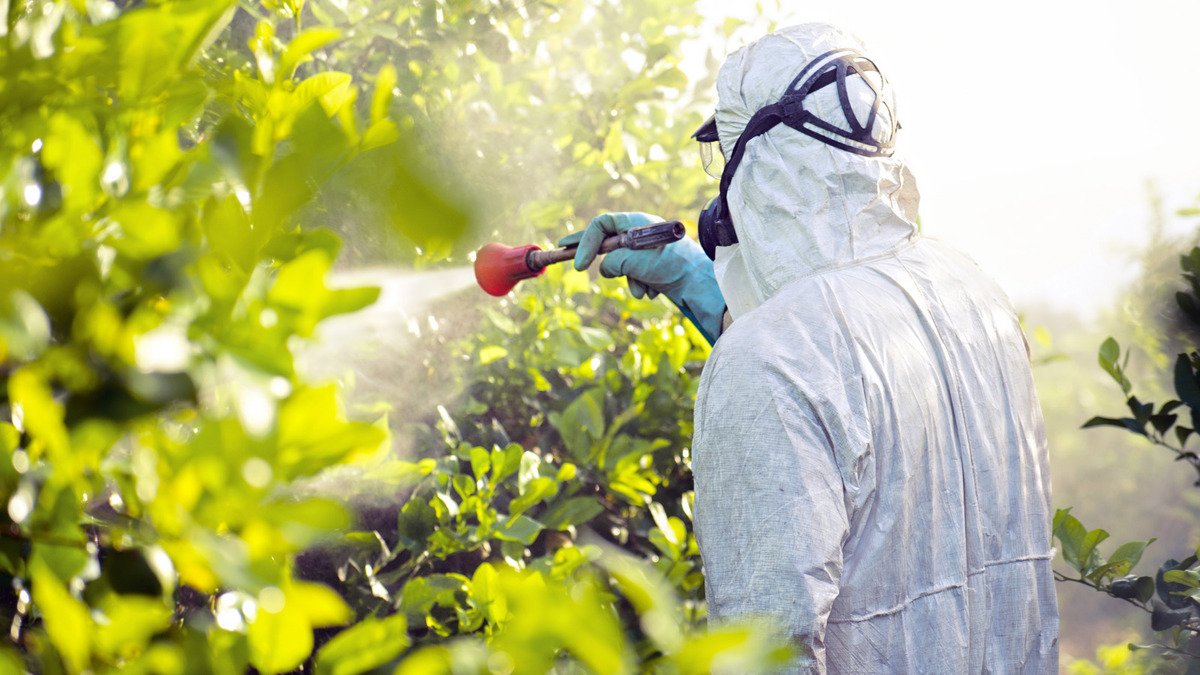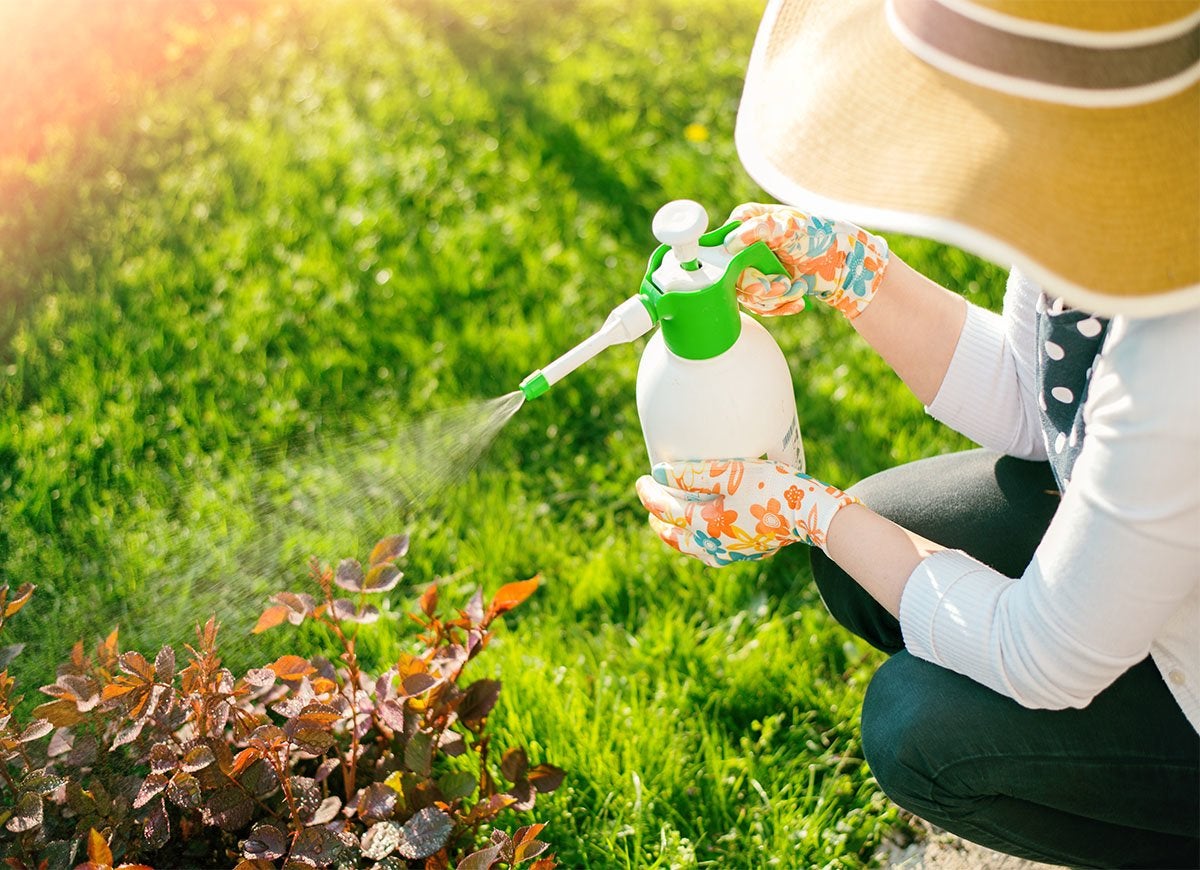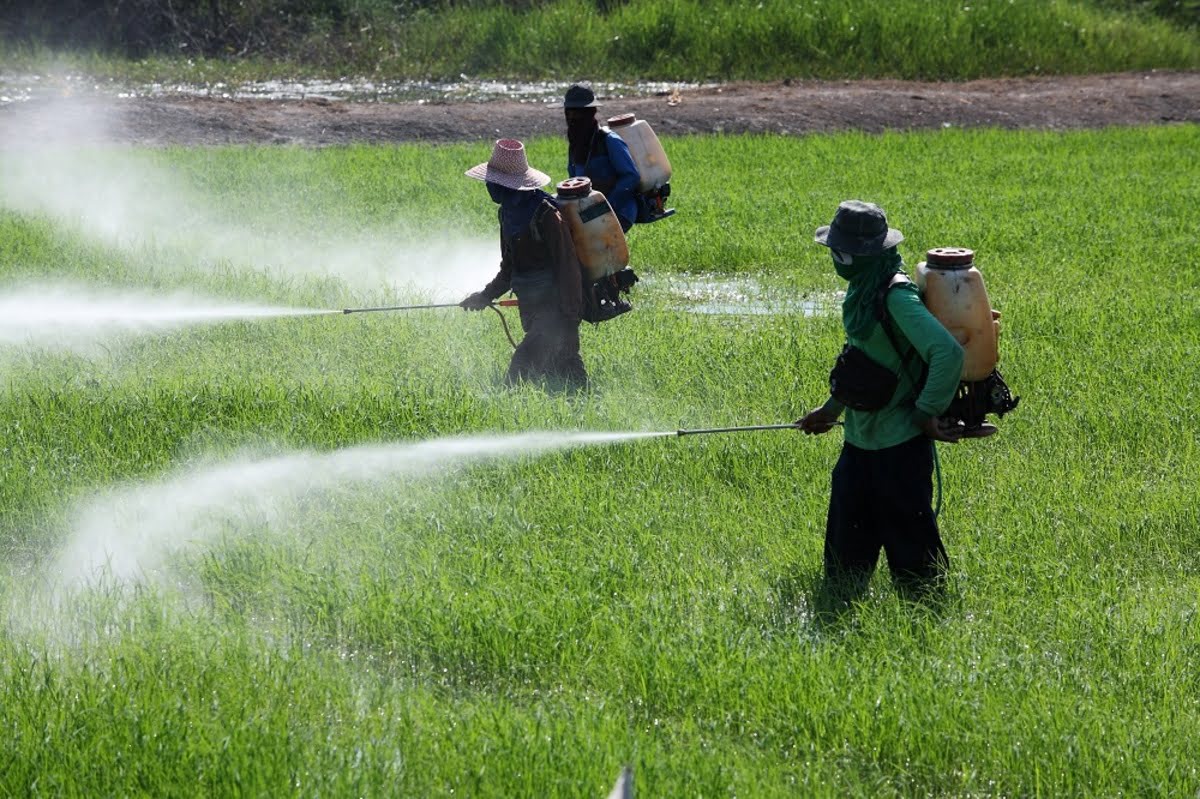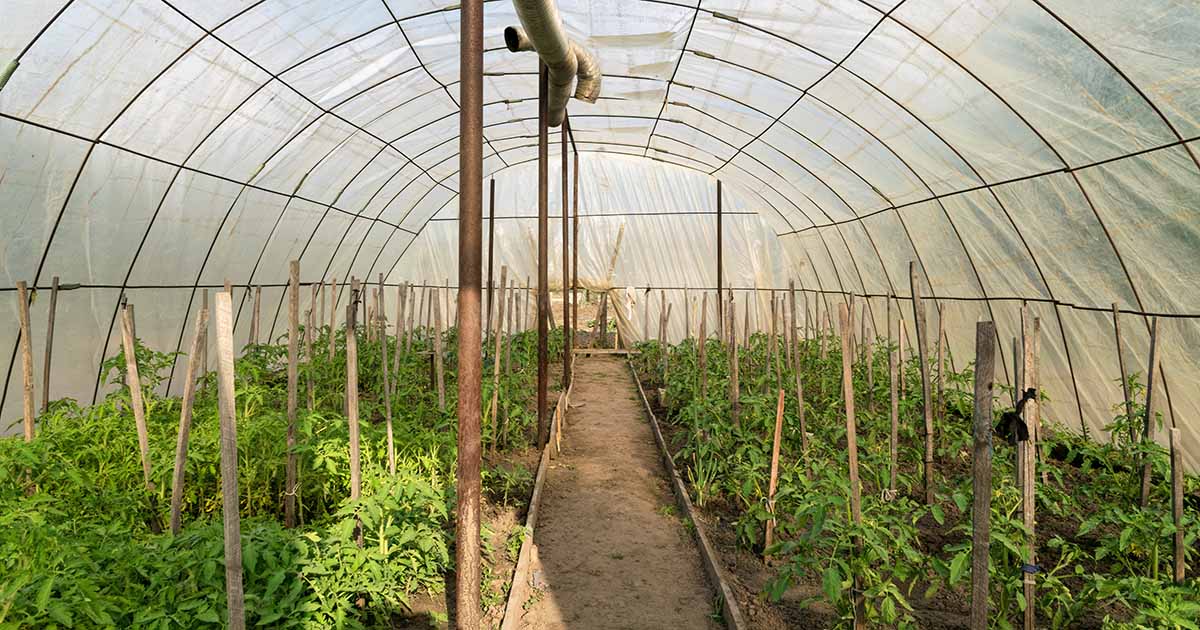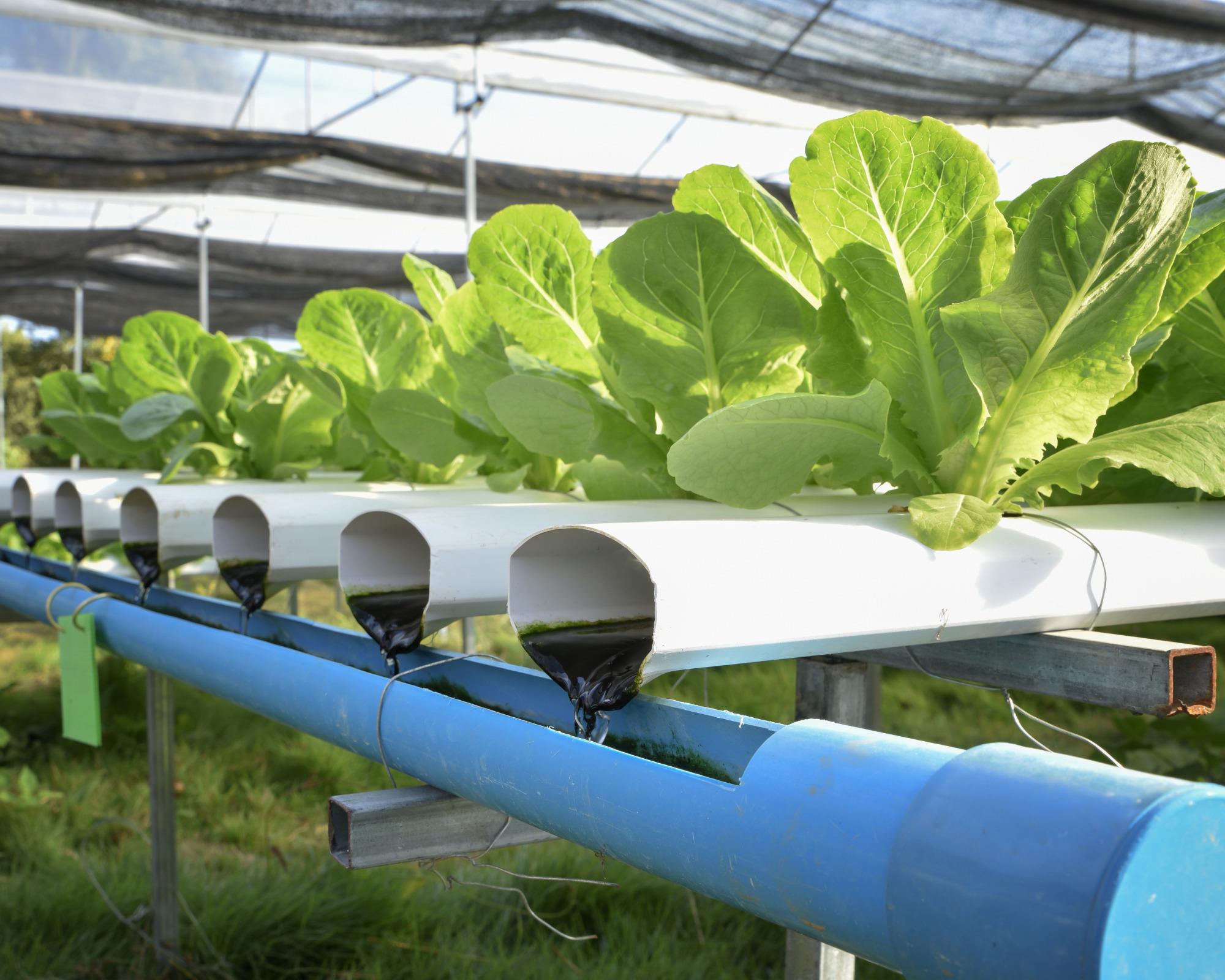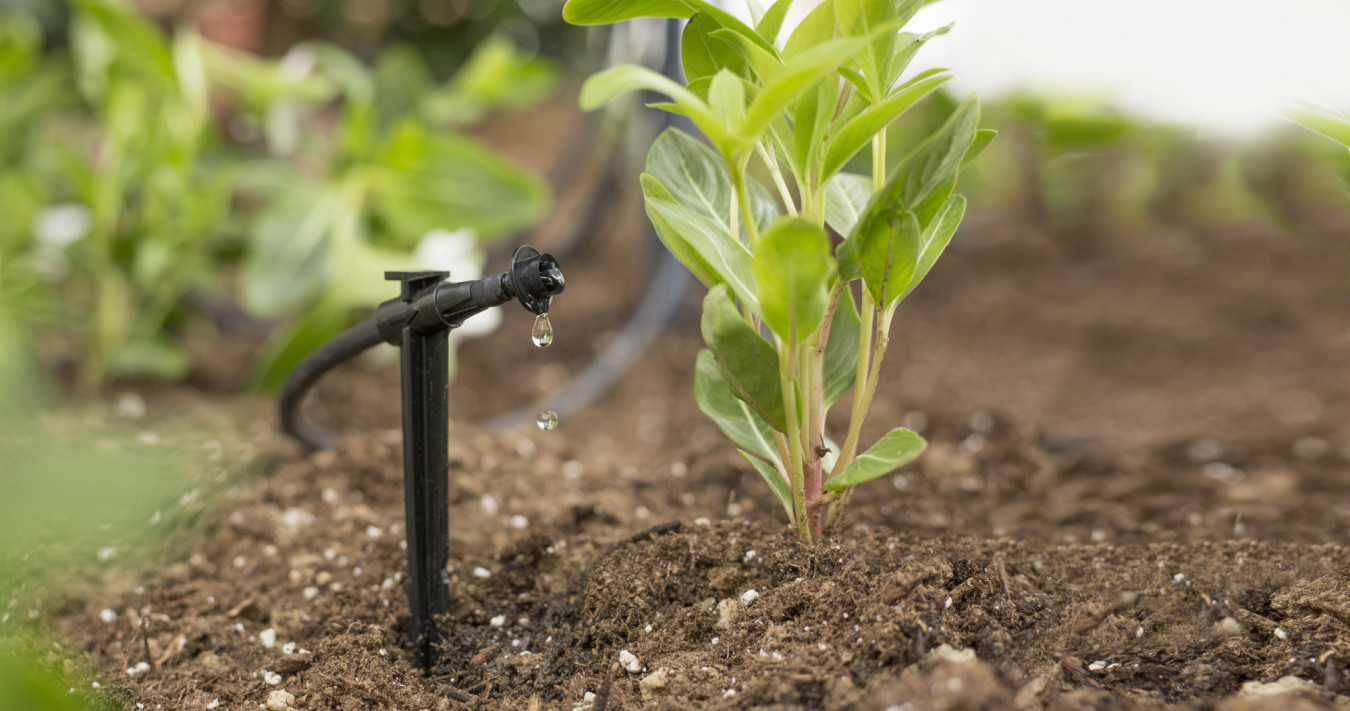Home>Gardening News and Trends>Latest News>How Does Pesticides Get Into Water
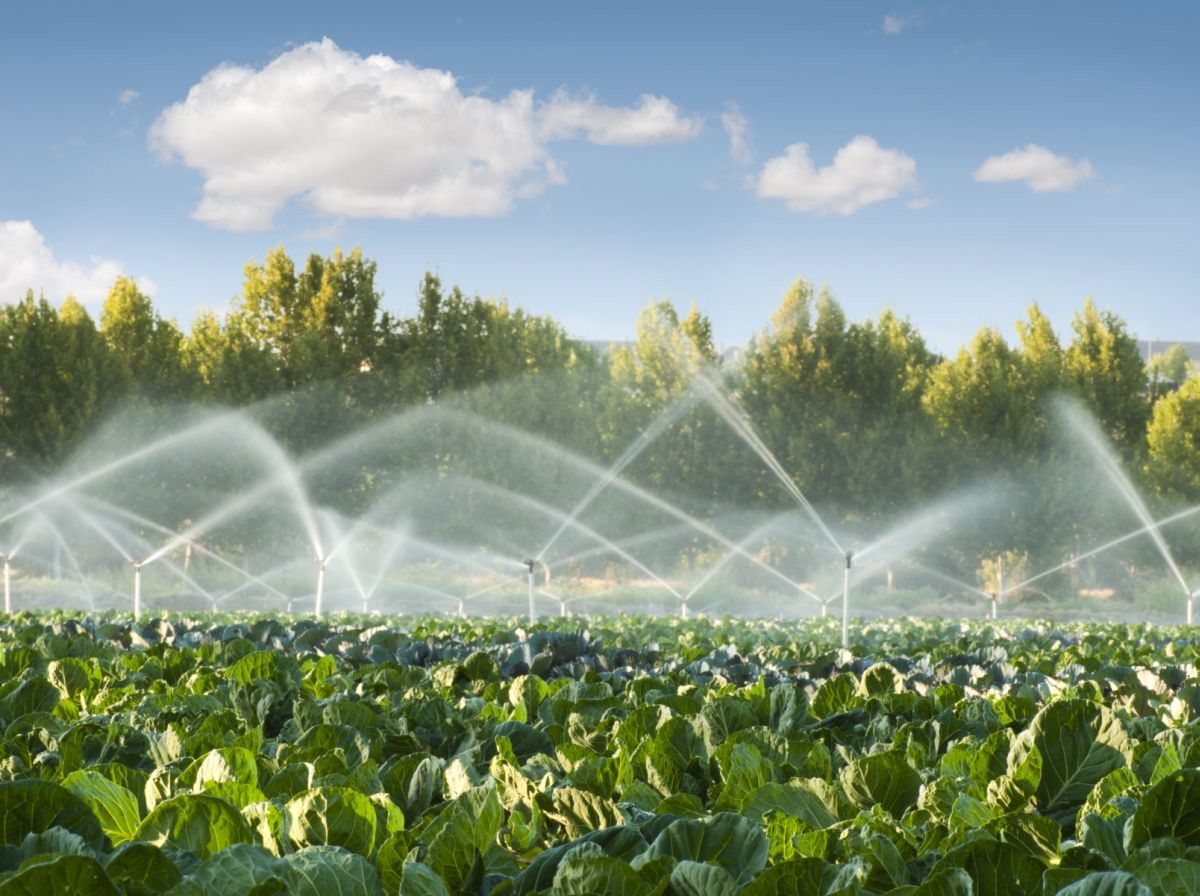

Latest News
How Does Pesticides Get Into Water
Modified: February 5, 2024
Discover the latest news on how pesticides make their way into water sources. Stay informed on the latest developments and learn about the potential impacts on our environment.
(Many of the links in this article redirect to a specific reviewed product. Your purchase of these products through affiliate links helps to generate commission for Chicagolandgardening.com, at no extra cost. Learn more)
Table of Contents
- Introduction
- Sources of Pesticides in Water
- Runoff from Agricultural Fields
- Drift from Pesticide Spraying
- Leaching from Soil
- Storage and Disposal of Pesticides
- Transport through Groundwater
- Surface Water Contamination
- Impact of Pesticides on Water Quality
- Effects on Human Health
- Effects on Aquatic Ecosystems
- Regulation and Mitigation Measures
- Conclusion
Introduction
Pesticides play a crucial role in modern agriculture by protecting crops from pests, diseases, and weeds. However, the use of pesticides can also have unintended consequences, including their presence in our water sources. Pesticides in water can pose a significant risk to both human health and the environment, making it essential to understand how they make their way into our water systems.
Sources of pesticides in water can vary, but the most common pathways include runoff from agricultural fields, drift from pesticide spraying, leaching from soil, and improper storage and disposal of pesticides. These different pathways contribute to the contamination of both surface water, such as lakes and rivers, and groundwater, which is the water that lies beneath the surface of the Earth.
One of the primary sources of pesticide contamination in water is runoff from agricultural fields. When pesticides are applied to crops, they can be washed away by rain or irrigation, carrying them into nearby streams, rivers, and eventually larger bodies of water. Additionally, pesticide drift occurs when wind carries pesticides from targeted areas into adjacent areas, further contributing to water pollution.
Leaching is another significant pathway for pesticides to enter water sources. When pesticides are applied to the soil, heavy rainfall or excessive irrigation can carry them downwards through the soil layers, reaching the groundwater. From there, the pesticides can travel long distances, potentially contaminating drinking water sources.
Improper storage and disposal of pesticides can also lead to water pollution. If pesticides are stored incorrectly, they can leak or spill, seeping into nearby soil and water sources. Similarly, if pesticides are improperly disposed of, such as being dumped directly into bodies of water or poured down drains, they can enter the water system and pose a serious threat to aquatic life and human health.
The transport of pesticides through groundwater is another significant concern. Groundwater is often used as a source of drinking water, making it crucial to ensure its quality. Pesticides that have leached into the soil can migrate through the porous layers and contaminate groundwater, making it unsuitable for consumption.
The contamination of surface water, such as lakes and rivers, by pesticides is a significant environmental concern. These bodies of water serve as habitats for various aquatic species and play a crucial role in the ecosystem. When pesticides enter these water sources, they can harm aquatic organisms, disrupt the balance of the ecosystem, and ultimately impact the overall biodiversity of the area.
In the following sections, we will explore the impact of pesticides on water quality, including their effects on human health and aquatic ecosystems. We will also discuss the regulations and mitigation measures implemented to protect our water sources. By understanding the sources and consequences of pesticide contamination in water, we can take steps towards sustainable practices to safeguard our water supplies.
Sources of Pesticides in Water
There are several sources through which pesticides can enter our water systems, posing a potential risk to both human health and the environment. Understanding these sources is crucial in developing effective strategies to mitigate pesticide contamination in water.
Runoff from Agricultural Fields: One of the primary sources of pesticide contamination in water is the runoff from agricultural fields. When pesticides are applied to crops, they can be carried away by rainwater or irrigation, eventually reaching nearby streams, rivers, and larger bodies of water. This runoff carries with it the pesticides, contributing to water pollution. Additionally, soil erosion can transport pesticides from treated fields to nearby water sources.
Drift from Pesticide Spraying: Pesticide drift occurs when wind carries sprayed pesticides away from their intended target areas. This can lead to the unintentional deposition of pesticides on nearby water bodies. Drift is particularly concerning for aquatic environments, as the pesticides can directly enter the water and affect aquatic life.
Leaching from Soil: Leaching is another pathway through which pesticides enter water sources. When pesticides are applied to the soil, rainfall or excessive irrigation can carry them down through the soil layers. These pesticides can then contaminate the groundwater, which is the water that exists beneath the surface of the Earth. Groundwater can serve as a source of drinking water, making it crucial to minimize pesticide leaching to protect human health.
Storage and Disposal of Pesticides: Improper storage and disposal of pesticides can also contribute to water contamination. If pesticides are not stored correctly, they can leak or spill, eventually making their way into nearby soil and water sources. Similarly, if pesticides are disposed of improperly, such as being dumped directly into bodies of water or poured down drains, they can enter the water system and pose a serious threat to aquatic life and human health.
Transport through Groundwater: Pesticides that have leached into the soil can migrate through the porous layers and contaminate groundwater. This is a significant concern, as groundwater is often used as a source of drinking water. The movement of pesticides through groundwater can result in long-term contamination of water supplies, necessitating careful monitoring and management.
Surface Water Contamination: Pesticides can also contaminate surface water, including lakes and rivers, directly. This can occur through various means, such as runoff from nearby agricultural fields or urban areas, as well as accidental spills into water bodies. Surface water contamination is a particular concern due to its impact on aquatic ecosystems and the potential for pesticides to bioaccumulate in the food chain.
By identifying and understanding the various sources of pesticide contamination in water, it becomes possible to implement targeted measures to mitigate their impact. Effective strategies can include better management practices in agriculture, proper storage and disposal of pesticides, and the use of alternative pest control methods to minimize reliance on chemical pesticides. Additionally, regular monitoring of water sources and adherence to strict regulatory standards are essential in safeguarding our water supplies from pesticide pollution.
Runoff from Agricultural Fields
Agricultural fields serve as one of the major sources of pesticide contamination in water. When pesticides are applied to crops, they can be washed away by rainwater or irrigation, leading to runoff that carries the pesticides into nearby streams, rivers, and ultimately larger bodies of water.
The process of pesticide runoff from agricultural fields begins with the application of pesticides to the crops. Farmers use various methods such as sprays, granules, or seed treatments to control pests, diseases, and weeds. However, not all the pesticides stay on the crops; some are bound to be lost during the application process or runoff from the plants.
Factors such as the intensity and duration of rainfall, soil type, slope, and the presence of vegetative buffers can influence the extent of pesticide runoff. Heavy rainfall events, especially when they occur shortly after pesticide application, can result in significant runoff and the subsequent transport of pesticides into water sources.
Pesticides that are carried by runoff water can have adverse effects on aquatic ecosystems and water quality. These pesticides can contaminate surface water bodies, leading to the loss of aquatic biodiversity and disruption of ecosystem functions. They can also affect the quality of drinking water sources, posing a risk to human health.
To mitigate the runoff of pesticides from agricultural fields, various management practices can be implemented. One approach is to reduce the use of pesticides through integrated pest management (IPM) practices. IPM involves the strategic use of multiple pest control methods, including biological control, crop rotation, and the use of resistant cultivars, with the goal of minimizing the reliance on chemical pesticides.
Additionally, implementing conservation practices can help reduce pesticide runoff. Contour plowing, terracing, and the use of cover crops can minimize soil erosion and increase water infiltration, reducing the likelihood of pesticide transport through runoff. In some cases, vegetative buffers, such as grass waterways or filter strips, can be established along the edges of fields to intercept and filter runoff, effectively trapping sediment and reducing pesticide movement into water bodies.
Furthermore, precision agriculture techniques can be employed to optimize pesticide application. These techniques utilize technologies such as GPS, remote sensing, and variable rate application equipment to precisely target pesticide application only where and when it is needed, minimizing overspray and reducing the potential for runoff.
Educating farmers about the potential risks associated with pesticide runoff and promoting best management practices can also play a crucial role in minimizing the impact of pesticide contamination. Training programs and extension services can provide farmers with information on proper pesticide handling, application timing, and the use of alternative pest control methods to ensure responsible pesticide use and protect water quality.
By implementing these measures and promoting sustainable agricultural practices, it is possible to reduce pesticide runoff from agricultural fields and safeguard our water sources from contamination. Collaborative efforts between farmers, researchers, regulatory agencies, and the wider community are essential in addressing the challenges posed by pesticide runoff and ensuring the long-term sustainability of our water resources.
Drift from Pesticide Spraying
Drift from pesticide spraying is one of the significant pathways through which pesticides can enter water sources. Pesticide drift occurs when wind carries sprayed pesticides away from their intended target areas, causing them to be deposited in unintended locations, including nearby water bodies.
During pesticide application, whether through aerial spraying or ground-based techniques, the pesticides are released into the air as fine droplets or particles. These particles can be easily transported by wind currents and may travel significant distances from the application site. As a result, nearby water bodies, such as rivers, lakes, and ponds, can become unintentional recipients of these pesticides.
The extent of pesticide drift depends on various factors, including weather conditions, spray equipment, application techniques, and proximity to water sources. Wind speed, direction, and stability can significantly influence the distance and direction of pesticide drift. High winds can carry the sprayed pesticides far beyond the intended target area, increasing the likelihood of contamination of adjacent water bodies.
Drift from pesticide spraying poses specific risks to aquatic environments. When pesticides are deposited on the surface of water bodies, they can directly enter the water and come into contact with aquatic organisms. These organisms, including fish, invertebrates, and plants, can be adversely affected by the presence of pesticides, leading to reduced populations, impaired reproductive capabilities, or even death.
To mitigate the risk of pesticide drift into water bodies, several strategies can be employed. One approach is the use of buffer zones, which are areas of reduced pesticide application or exclusion zones around water bodies. These buffer zones act as physical barriers, reducing the chances of pesticide drift and protecting the water bodies from contamination.
Another strategy is careful timing of pesticide applications. By considering wind patterns and weather conditions, farmers and applicators can choose the optimal time for spraying when the risk of drift is low. Early morning or late evening, when wind speeds are typically lower, can be preferable for pesticide application, reducing the potential for drift to water bodies.
Improvements in spray equipment and application techniques can also help minimize pesticide drift. State-of-the-art technologies, such as drift-reducing nozzles and air induction systems, produce larger droplets that are less prone to being carried by wind. These technologies can significantly reduce the risk of drift while ensuring effective pest control.
Educating farmers and pesticide applicators about drift management is vital in preventing pesticide contamination of water bodies. Training programs can provide information on best management practices, proper nozzle selection, spray techniques, and the importance of considering weather conditions and wind direction during pesticide application.
In summary, drift from pesticide spraying poses a significant risk of pesticide contamination in water bodies. The inadvertent deposition of sprayed pesticides in water can have detrimental effects on aquatic ecosystems and the organisms that depend on them. By implementing buffer zones, carefully timing pesticide applications, utilizing advanced spray equipment, and providing education and training, the risks associated with drift can be minimized, safeguarding our water sources from pesticide contamination.
Leaching from Soil
Leaching is a significant pathway through which pesticides can enter water sources. When pesticides are applied to the soil, rainfall or excessive irrigation can carry them downward through the soil layers, leading to the contamination of groundwater, which serves as a vital source of drinking water.
The process of leaching begins when pesticides are applied to the soil surface. Over time, these pesticides can move through the soil matrix due to the downward movement of water. Leaching is influenced by factors such as soil characteristics, pesticide properties, weather conditions, and the presence of natural drainage pathways.
The extent of leaching depends on various pesticide-related factors, including solubility, volatility, adsorption, and degradation rates. Highly soluble pesticides, for example, are more prone to leaching as they readily dissolve in water. Pesticides with high volatility, on the other hand, are more likely to evaporate and not reach the groundwater.
Soil characteristics play a crucial role in pesticide leaching. Soil texture, organic matter content, and drainage capacity can influence the movement of pesticides through the soil profile. Sandy soils, for instance, have larger pore spaces and lower adsorption capacity, making them more susceptible to pesticide leaching compared to clay or loam soils.
Heavy rainfall or excessive irrigation can further accelerate pesticide leaching. When there is an abundance of water, it can facilitate the movement of pesticides through the soil profile, potentially contaminating the underlying groundwater. This is particularly concerning because groundwater often serves as a drinking water source, making it vital to prevent its contamination.
The contamination of groundwater by leached pesticides can have serious implications for human health. If pesticides are present in drinking water sources, they can pose a risk to individuals who consume the contaminated water. Prolonged exposure to certain pesticides, even at low concentrations, can have adverse health effects, including neurological, reproductive, and developmental disorders.
To minimize pesticide leaching and protect groundwater, several strategies can be implemented. Integrated pest management (IPM) practices can help reduce the need for pesticides and lower their overall application rates. By utilizing non-chemical alternatives, crop rotation, and pest-resistant cultivars, the reliance on pesticide use can be reduced, ultimately decreasing the potential for leaching.
Proper timing and dosage of pesticide applications are also crucial. Applying pesticides when heavy rainfall is not expected, or when the soil moisture is sufficient to prevent excessive runoff, can help minimize the movement of pesticides through leaching. Additionally, following label instructions regarding dosage and application rates can prevent over-application and reduce the risk of pesticide contamination.
The use of conservation practices can also aid in mitigating pesticide leaching. Conservation tillage, cover cropping, and the establishment of buffer zones can help improve soil structure, increase organic matter content, and enhance water infiltration capacity. These practices can reduce surface runoff and promote water retention in the soil, reducing the potential for pesticide movement through leaching.
Educating farmers and landowners about the impacts of pesticide leaching and promoting best management practices are essential in protecting groundwater quality. Training programs can provide guidance on proper pesticide use, soil conservation practices, and the importance of regular monitoring to ensure the long-term sustainability of water resources.
By implementing these measures and emphasizing responsible pesticide use, it is possible to minimize the leaching of pesticides from soil into water sources. Protecting groundwater quality is not only crucial for ensuring safe drinking water supplies but also for preserving the integrity of aquatic ecosystems and maintaining the overall health of our environment.
Storage and Disposal of Pesticides
The proper storage and disposal of pesticides are essential to prevent their entry into water sources and minimize the risks associated with their contamination. Improper handling or disposal of pesticides can result in their release into the environment, leading to water pollution and potential harm to human health and the ecosystem.
When it comes to pesticide storage, it is imperative to follow specific guidelines to ensure their secure containment. Pesticides should be stored in a dedicated, well-ventilated area that is secure and inaccessible to unauthorized individuals, including children and pets. Ideally, this storage area should be lockable and separate from areas used for food storage or other household items.
Pesticides should be kept in their original, properly labeled containers. Labels provide essential information regarding proper handling, usage, and disposal of the pesticide. Storing pesticides in their original containers also reduces the risk of confusion and accidental mixing that could lead to chemical reactions or hazardous situations.
Furthermore, it is important to monitor and regularly inspect pesticide storage areas for signs of leakage, damage, or deterioration. If any leaks or spills are identified, immediate action should be taken to mitigate the risk of pesticide contamination. Containment measures, such as using absorbent materials or spill trays, can help prevent the spread of spilled pesticides and minimize their impact on water sources.
Proper disposal of pesticides is equally crucial to prevent their entry into water sources. Pesticides should never be disposed of in sinks, toilets, or storm drains, as these can lead directly to water bodies. Instead, pesticide containers should be thoroughly rinsed according to label instructions and disposed of as per local regulations.
Many communities have specific programs or designated facilities for pesticide disposal. These programs typically involve collection events or drop-off locations where individuals can safely dispose of their unused or expired pesticides. It is important to check with local authorities or environmental agencies to learn about available disposal options in your area.
Avoiding the accumulation of expired or unwanted pesticides is another key aspect of proper pesticide management. By keeping inventory records, monitoring expiration dates, and using pesticides before they become outdated, the risk of accumulating excess and potentially hazardous pesticides can be minimized.
Educating individuals responsible for handling pesticides about proper storage and disposal practices is vital. Training programs and educational materials can inform pesticide users about the potential risks associated with improper pesticide management and emphasize the importance of adhering to best practices for safeguarding water quality.
Government regulations and legislation play a critical role in ensuring the proper storage and disposal of pesticides. These regulations typically outline specific requirements for pesticide labeling, storage, and disposal practices to protect water sources and the environment. By complying with these regulations and staying updated on any changes or new guidelines, pesticide users can contribute to the overall protection of water resources.
By implementing responsible pesticide storage and disposal practices, individuals can minimize the risk of pesticide contamination and protect water sources from potential pollution. Working collectively, we can ensure the long-term sustainability of our water resources and mitigate the potential adverse effects that improper pesticide management can have on human health and the environment.
Transport through Groundwater
Transport through groundwater is a significant concern when it comes to pesticide contamination in water sources. Groundwater, the water that exists beneath the Earth’s surface, is a crucial source of drinking water for many communities. Pesticides that have leached into the soil can migrate through the porous layers and contaminate groundwater, posing a potential risk to human health and ecosystems.
The transport of pesticides through groundwater primarily occurs through a process known as advection. Advection is the movement of water containing dissolved pesticides through the soil and rock layers. This movement is influenced by various factors, including the properties of the pesticide, soil type, hydraulic conductivity, and the presence of preferential flow pathways.
Different pesticides have distinct properties that impact their transport through groundwater. Soluble pesticides, for example, have a higher likelihood of moving with the water flow. Pesticides with low adsorption potential also have a higher chance of being transported through groundwater compared to those that bind strongly to soil particles.
Soil type is another crucial factor in pesticide movement through groundwater. Sandy soils, which have larger and more interconnected pore spaces, permit quicker water flow and facilitate the transport of pesticides. On the other hand, soils with a higher clay or silt content tend to have smaller pore spaces and higher adsorption capacities, reducing the mobility of pesticides through groundwater.
The hydraulic conductivity of the soil, which refers to its ability to transmit water, also affects pesticide transport. Soils with higher hydraulic conductivity allow water and dissolved pesticides to move more easily through the subsurface layers. This can increase the potential for pesticide contamination of groundwater.
Preferential flow pathways, such as macropores or fractures in the soil and rock, can significantly impact pesticide movement through groundwater. These pathways provide faster routes for water flow and can bypass the natural filtering processes that typically occur in the soil. Pesticides can quickly travel through these preferential flow pathways, potentially reaching groundwater without being effectively removed.
The contamination of groundwater by pesticides is a concern because it serves as a critical source of drinking water for many communities. Prolonged exposure to pesticides through contaminated groundwater can have adverse health effects, including the risk of developmental, reproductive, or neurological disorders. Vulnerable populations, such as children and pregnant women, are particularly at risk.
To mitigate the transport of pesticides through groundwater, several strategies can be implemented. Implementing proper pesticide application techniques, such as reducing application rates or utilizing soil incorporation methods, can help minimize the amount of pesticide reaching the soil surface and subsequently infiltrating into groundwater.
Conservation practices, such as the use of cover crops or contour plowing, can enhance soil structure and reduce erosion, effectively reducing the movement of pesticides through runoff and subsequent leaching into groundwater. These practices also support the development of healthier soils with improved water-holding capacity, which can minimize the need for excessive irrigation and reduce the potential for pesticide movement through waterlogged soils.
Ongoing monitoring and regular assessment of groundwater quality are essential to identify and address pesticide contamination in a timely manner. Implementing monitoring programs can help detect the presence of pesticides and facilitate appropriate remedial actions if contamination is identified.
Public awareness and education about the potential risks associated with pesticide contamination in groundwater are crucial. Providing information to farmers, landowners, and the wider community about proper pesticide use, storage, and disposal practices can promote responsible pesticide management and encourage the protection of groundwater resources.
By implementing these strategies and adopting sustainable agricultural practices, we can reduce the transport of pesticides through groundwater, safeguarding our drinking water sources and protecting the long-term health and well-being of both humans and the environment.
Surface Water Contamination
Surface water, including lakes, rivers, and streams, can become contaminated by pesticides, posing a significant threat to aquatic ecosystems and water quality. Pesticide contamination of surface water can occur through various pathways, such as runoff from adjacent agricultural fields, urban areas, or accidental spills.
One of the primary sources of surface water contamination is the runoff from agricultural fields. When pesticides are applied to crops, they can be carried away by rainwater or irrigation, leading to runoff that enters nearby water bodies. Surface water contamination from agricultural runoff is a concern because it can result in the loss of aquatic biodiversity and disrupt the balance of these fragile ecosystems.
Urban areas can also contribute to surface water contamination. Pesticides applied to lawns, gardens, and landscaping can be transported to nearby water bodies through stormwater runoff. Additionally, improper pesticide use or illegal dumping of pesticides into storm drains can directly introduce harmful substances into surface water, further exacerbating the contamination.
Accidental spills of pesticides during transportation, storage, or application can also have severe consequences for surface water quality. Spills can occur during pesticide handling, leading to the direct release of pesticides into nearby water bodies. These spills can contaminate large volumes of water, causing immediate harm to aquatic organisms and potentially affecting downstream areas.
Pesticide contamination of surface water can have a range of detrimental effects on aquatic ecosystems. Aquatic organisms such as fish, invertebrates, and plants can be directly affected by the presence of pesticides. Pesticides can disrupt normal cellular functions, impair reproduction, and cause changes in behavior and growth rates. In extreme cases, pesticide contamination can result in fish kills or the complete loss of sensitive aquatic species.
Surface water contamination is not only a threat to aquatic organisms but also has potential implications for human health. If surface water is used as a source of drinking water, the presence of pesticides can pose a risk to human consumers. Prolonged exposure to certain pesticides, even at low concentrations, can have adverse health effects, including nervous system disorders, reproductive issues, and developmental abnormalities.
To mitigate surface water contamination, various measures can be implemented. Implementing best management practices in agriculture, such as precision application techniques and the use of integrated pest management (IPM) approaches, can reduce the overall reliance on chemical pesticides and minimize their potential entry into surface water.
Improving stormwater management in urban areas can help reduce the transport of pesticides from lawns and gardens to surface water bodies. Utilizing techniques such as rain gardens, permeable pavement, and vegetative buffer strips can aid in capturing and filtering stormwater runoff, reducing the amount of pesticides entering surface water.
Effective spill response plans and education regarding proper handling and storage of pesticides are crucial for preventing accidental releases and minimizing surface water contamination. Prompt cleanup and containment of spills can help mitigate the immediate impact of pesticide contamination on surface water and limit the potential for further damage to ecosystems.
Regulatory frameworks and monitoring programs also play a vital role in protecting surface water from pesticide contamination. Laws and regulations should enforce proper pesticide use, storage, and disposal practices to reduce the risk of surface water contamination. Regular monitoring of water bodies can help identify contamination issues and enable appropriate remediation measures to be taken swiftly.
By addressing the sources of surface water contamination, implementing best management practices, and promoting responsible pesticide use, we can protect our surface water resources, preserve aquatic ecosystems, and ensure the availability of clean and healthy water for both humans and the environment.
Impact of Pesticides on Water Quality
Pesticides have significant implications for water quality, with the potential to degrade aquatic ecosystems and pose risks to human health. Understanding the impact of pesticides on water quality is crucial for implementing measures to protect and preserve our water resources.
One of the primary concerns regarding pesticides is their toxicity to aquatic organisms. Pesticides can be highly toxic to a wide range of aquatic life, including fish, amphibians, invertebrates, and algae. Even at low concentrations, certain pesticides can interfere with the normal functioning of organisms, causing developmental abnormalities, reproductive issues, and reduced populations.
Pesticides can disrupt the balance of aquatic ecosystems by affecting the structure and function of food webs. Algae, which form the base of the aquatic food chain, can be directly impacted by pesticides. The loss of algae can have cascading effects on higher trophic levels, leading to reduced abundance or even extinction of species. This disruption can have far-reaching consequences for ecosystem stability and biodiversity.
Another significant concern is the potential for bioaccumulation of pesticides in the food chain. Pesticides can accumulate in the tissues of organisms over time, reaching higher concentrations as they move up the food web. This means that predators at the top of the food chain, including humans, may be exposed to higher concentrations of pesticides through the consumption of contaminated prey.
Pesticides in water can have adverse effects on the quality of drinking water sources. While drinking water treatment processes aim to remove contaminants, some pesticides may be resistant to conventional treatment methods. Exposure to pesticides through drinking water can pose risks to human health, including potential long-term effects on the nervous system, reproductive system, and developmental processes.
Water bodies that are contaminated with pesticides may also experience changes in water chemistry. Pesticides can alter the pH levels and nutrient balance of water, disrupting the natural balance of the aquatic environment. These changes can lead to shifts in the composition of aquatic communities, favoring certain species while negatively impacting others.
The persistence of some pesticides in water can further exacerbate their impact on water quality. Some pesticides have long half-lives, meaning they can persist in water for extended periods. This prolonged presence increases the potential for continuous exposure of aquatic organisms to the pesticides, amplifying the risks to both the ecosystem and human health.
To address the impact of pesticides on water quality, various measures can be implemented. Integrated pest management (IPM) practices can help reduce the reliance on chemical pesticides by utilizing alternative pest control methods. This approach reduces the overall load of pesticides entering water bodies, minimizing their impact on water quality.
Policies and regulations can play a crucial role in protecting water quality. Implementing stricter regulations on pesticide use, storage, and disposal can help prevent contamination and ensure responsible pesticide management. Regular monitoring programs can provide valuable data on pesticide levels in water bodies, enabling authorities to take appropriate remedial actions if contamination is detected.
Education and awareness are vital in promoting responsible pesticide use. Farmers, pesticide applicators, and the wider community should be educated about the potential risks associated with pesticides and the need to protect water quality. Providing information on best practices, proper storage, handling, and disposal of pesticides can help minimize their impact on water resources.
By understanding the impact of pesticides on water quality and implementing measures to mitigate their effects, we can protect our water sources, preserve aquatic ecosystems, and safeguard the health and well-being of both humans and the environment.
Effects on Human Health
The presence of pesticides in water sources can have detrimental effects on human health. Pesticides are designed to be toxic to pests, and exposure to these chemicals through contaminated water can pose various health risks.
One of the primary concerns regarding pesticide exposure is the potential for acute toxicity. Certain pesticides can cause immediate adverse health effects when consumed or when there is direct contact with the skin. Acute symptoms can range from nausea, dizziness, and headache to more severe effects such as respiratory distress, tremors, and even organ failure in extreme cases.
Long-term exposure to pesticides in water is also a significant concern. Prolonged or repeated exposure to low levels of pesticides, even below the acute toxic threshold, can have chronic health effects. Some pesticides have been linked to the development of chronic diseases such as cancer, neurodegenerative disorders, hormonal imbalances, and reproductive problems.
Pregnant women and developing fetuses are particularly vulnerable to the effects of pesticide exposure. Some pesticides can cross the placenta and reach the developing baby. This can lead to developmental abnormalities, low birth weight, neurobehavioral disorders, and potential long-term impacts on the child’s health and well-being.
Children, with their developing bodies and higher metabolic rates, may also be more susceptible to the harmful effects of pesticide exposure. Exposure to pesticides during critical stages of growth and development can interfere with normal physiological processes and have long-lasting consequences on cognitive function, behavior, and overall health.
In addition to direct health effects, pesticides in water can also pose an indirect risk through contaminated food sources. Pesticide residues in water can be taken up by plants and accumulate in fruits, vegetables, and other food products. Consuming such foods can lead to the ingestion of pesticides, contributing to overall exposure levels and potential health risks.
Drinking water contaminated with pesticides can be a significant route of exposure for humans. While municipal water treatment plants typically remove or reduce pesticide levels, certain pesticides may be resistant to conventional treatment methods. This highlights the importance of protecting water sources and implementing measures to prevent pesticide contamination in the first place.
To minimize the health risks associated with pesticide exposure, precautions and prevention measures are necessary. Integrated pest management (IPM) practices, which aim to reduce reliance on chemical pesticides, can help lower overall exposure levels and protect human health. Utilizing alternative pest control methods, such as biological control or cultural practices, can effectively manage pests while minimizing the use of toxic chemicals.
Regulations and monitoring programs play a crucial role in protecting human health. Governments and regulatory bodies set standards for acceptable pesticide levels in drinking water and regularly monitor water sources for compliance. Implementing strict regulations on the use, storage, and disposal of pesticides can help prevent contamination and ensure responsible pesticide management practices.
Education and awareness are vital in promoting safe pesticide use and protecting human health. Training programs, public campaigns, and informational resources can help raise awareness about the potential risks of pesticide exposure, proper handling and storage practices, and the importance of using protective measures when working with pesticides.
By implementing these measures and prioritizing human health, we can reduce the risks associated with pesticide exposure in water sources and work towards sustainable practices that protect both the environment and the well-being of the population.
Effects on Aquatic Ecosystems
Pesticides can have significant and often detrimental effects on aquatic ecosystems. These chemicals, designed to target pests and weeds, can unintentionally harm aquatic organisms and disrupt the delicate balance of aquatic ecosystems.
One of the primary effects of pesticides on aquatic ecosystems is the direct toxicity to aquatic organisms. Fish, invertebrates, amphibians, and algae are particularly vulnerable to the toxic effects of pesticides. Pesticides can impair the normal functioning of these organisms, leading to reduced populations, decreased reproduction rates, and even death.
Pesticide-contaminated water can also negatively impact the physiology and behavior of aquatic organisms. For example, certain pesticides can interfere with the nervous system, impairing sensory perception, coordination, and feeding behavior in fish and other aquatic creatures. These disturbances can affect the overall health and survival of the impacted species.
Additionally, pesticides can disrupt the structure and functioning of aquatic food webs. Pesticides can directly affect primary producers such as algae, leading to reduced growth and productivity. This, in turn, affects the availability of food for higher trophic levels, including fish and other predators. Disrupted food webs can lead to imbalances, decreased species diversity, and ecological instability within the aquatic ecosystem.
The persistence and bioaccumulation potential of certain pesticides can further exacerbate their impact on aquatic ecosystems. Some pesticides can remain present in water for extended periods, continuously affecting organisms and increasing the potential for long-term ecological disruption. Pesticides that bioaccumulate in the tissues of organisms can reach higher concentrations as they move up the food chain, increasing the risk of toxicity for top predators.
Water bodies contaminated with pesticides often experience reduced water quality. Pesticides can alter the pH levels and nutrient balance, leading to changes in water chemistry. These changes can disrupt the natural balance of the aquatic environment, favoring certain species while negatively impacting others. This imbalance can have cascading effects on the entire ecosystem, affecting nutrient cycling, oxygen levels, and overall ecosystem functioning.
Pesticide contamination can also contribute to the eutrophication of water bodies. Excessive nutrient inputs from certain pesticides can promote the growth of algae and other aquatic plants, leading to algal blooms and oxygen depletion. This can result in conditions such as hypoxia, where oxygen levels become critically low, further impacting the survival of aquatic organisms.
The loss of sensitive aquatic species due to pesticide contamination can have far-reaching consequences for ecosystem resilience and stability. Key ecological functions such as nutrient cycling, water purification, and habitat provisioning can be disrupted, ultimately impacting the overall health and integrity of the aquatic ecosystem.
To mitigate the effects of pesticides on aquatic ecosystems, implementing integrated pest management (IPM) practices is crucial. IPM approaches seek to minimize the use of chemical pesticides and instead emphasize the integration of diverse and environmentally friendly pest control methods. This helps to reduce pesticide exposure levels for aquatic organisms and minimize the potential for ecological harm.
Conservation measures, such as the establishment of protected areas or the restoration of riparian zones, can help provide habitats and refuge for aquatic organisms. These measures support the recovery and preservation of biodiversity and contribute to the overall health of aquatic ecosystems.
Educating the public about the impact of pesticides on aquatic ecosystems is pivotal. Raising awareness about the importance of responsible pesticide use and promoting environmentally friendly alternatives can encourage individuals and communities to actively protect water bodies and the valuable ecosystems they support.
By taking these steps, we can work towards safeguarding the health and resilience of aquatic ecosystems, preserving biodiversity, and promoting the sustainable coexistence of humans and aquatic life.
Regulation and Mitigation Measures
Regulation and mitigation measures are vital in addressing the challenges posed by pesticide contamination in water sources. Governments, regulatory agencies, and stakeholders play a critical role in developing and implementing regulations and strategies to protect water quality and minimize the risks associated with pesticide use.
Regulatory frameworks set guidelines for pesticide registration, labeling, use, and disposal. These regulations ensure that only safe and approved pesticides enter the market, and they provide instructions on proper handling, storage, and application techniques. Compliance with these regulations is essential to minimize the potential for pesticide contamination in water sources.
Monitoring programs are crucial in assessing the occurrence and concentrations of pesticides in water bodies. Regular monitoring allows for early detection of contamination and facilitates the implementation of appropriate intervention measures. Monitoring data also provides valuable information for assessing the effectiveness of mitigation strategies and the compliance with regulatory standards.
Integrated pest management (IPM) practices serve as a key mitigation measure. IPM focuses on using a combination of preventive, biological, cultural, and chemical controls to manage pests effectively while minimizing reliance on chemical pesticides. By utilizing alternative pest management strategies, such as crop rotation, biological control, and resistant cultivars, the overall use of pesticides can be reduced, thereby reducing the risk of pesticide contamination in water sources.
Conservation practices are also effective mitigation measures. Implementing conservation tillage, cover cropping, and buffer strips can help reduce soil erosion, enhance water infiltration, and promote soil health. These practices minimize runoff and the transport of pesticides, sediment, and nutrients into water bodies, thereby reducing the risk of contamination.
Public education and outreach programs are essential for raising awareness about the impacts of pesticides and promoting responsible pesticide use. These programs provide information and training to farmers, pesticide applicators, and the general public about best management practices, integrated pest management, and proper handling and disposal of pesticides. Promoting awareness helps foster a collective responsibility for protecting water quality and encourages the adoption of sustainable agricultural practices.
Research and innovation play a crucial role in continuously improving mitigation strategies. The development of more selective, target-specific pesticides can help reduce non-target impacts. Advancements in precision agriculture also contribute to the optimized use of pesticides, minimizing over-application and reducing the potential for pesticide runoff and leaching into water sources.
Collaboration between governments, research institutions, industry stakeholders, and local communities is essential to address pesticide contamination effectively. Ongoing dialogue and partnerships can facilitate the sharing of knowledge, resources, and best practices, enabling the development and implementation of effective mitigation strategies at regional, national, and international levels.
International agreements and conventions, such as the Stockholm Convention on Persistent Organic Pollutants, aim to regulate and reduce the use of hazardous pesticides globally. These international efforts help coordinate actions and encourage countries to adopt sustainable pest management practices, ensuring the protection of water resources on a global scale.
By implementing and enforcing regulations, adopting integrated pest management practices, promoting conservation measures, and fostering ongoing research and collaboration, we can mitigate the risks associated with pesticide contamination in water sources. These collective efforts contribute to the preservation of water quality, the protection of ecosystems, and the creation of a more sustainable and resilient future for our communities and our planet.
Conclusion
Pesticide contamination in water is a significant concern that poses risks to human health, aquatic ecosystems, and overall water quality. Understanding the various sources of pesticide contamination, such as runoff from agricultural fields, drift from pesticide spraying, leaching from soil, and improper storage and disposal practices, is crucial in mitigating its impact.
The effects of pesticides on water quality are far-reaching. Aquatic organisms can suffer direct toxicity, disruption of their physiology, and disturbances in behavior, leading to reduced populations and impaired ecosystem functioning. Pesticides can also bioaccumulate in the food chain, posing risks to both aquatic organisms and humans who consume contaminated food sources. Additionally, pesticide contamination in water can lead to decreased water quality, disrupt aquatic food webs, and contribute to the eutrophication of water bodies.
Regulation and mitigation measures play a vital role in addressing pesticide contamination. By implementing effective regulations, such as pesticide registration, labeling, and disposal guidelines, and employing monitoring programs, the risk of contamination can be minimized. Integrated pest management (IPM) practices, conservation measures, and public education efforts are essential in promoting responsible pesticide use and reducing reliance on chemical pesticides.
Collaborative efforts between governments, industry stakeholders, researchers, and local communities are necessary to successfully combat pesticide contamination. Sharing knowledge, resources, and best practices can lead to the development and implementation of effective mitigation strategies. Ongoing research and innovation in pesticide alternatives and precision agriculture further contribute to reducing the impact of pesticide contamination.
Protecting water resources from pesticide contamination requires a multi-faceted approach that prioritizes sustainable agricultural practices, responsible pesticide management, and the preservation of ecosystems. By safeguarding water quality, we not only protect the health and well-being of humans but also ensure the preservation of aquatic biodiversity and the long-term sustainability of water resources for future generations.
